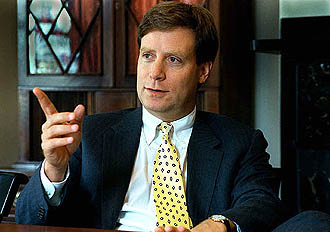Continuation of portfolio management highlights from Howard Marks’ book, The Most Important Thing: Uncommon Sense for the Thoughtful Investor, Chapter 13 “The Most Important Thing Is…Patient Opportunism” Selectivity, Patience, Cash
“…I want to…point out that there aren’t always great things to do, and sometimes we maximize our contribution by being discerning and relatively inactive. Patient opportunism – waiting for bargains – is often your best strategy.”
“…the investment environment is a given, and we have no alternative other than to accept it and invest within it…Among the value prized by early Japanese culture was mujo. Mujo was defined classically for me as recognition of ‘the turning of the wheel of the law,’ implying acceptance of the inevitability of change, of rise and fall…In other words, mujo means cycles will rise and fall, things will come and go, and our environment will change in ways beyond our control. Thus we must recognize, accept, cope, and respond. Isn’t that the essence of investing?...All we can do is recognize our circumstances for what they are and make the best decisions we can, given the givens.”
“Standing at the plate with the bat on your shoulders is Buffett’s version of patient opportunism. The bat should come off your shoulders when there are opportunities for profit with controlled risk., but only then. One way to be selective in this regard is by making every effort to ascertain whether we’re in a low-return environment or a high-return environment.”
In order to practice patient opportunism by implementing standards of selectivity, the investor must first have a method for recognizing & determining the best course of action based on risk-reward opportunities in the past, present, and future.
Selectivity, Clients
“Because they can’t strike out looking, investors needn’t feel pressured to act. They can pass up lot of opportunities until they see one that’s terrific…the only real penalty is for making losing investments…For professional investors paid to manage others’ money, the stakes are higher. If they miss too many opportunities, and if their returns are too low in good times, money managers can come under pressure from clients and eventually lose accounts. A lot depends on how clients have been conditioned.”
One caveat to the "no called-strikes": clients. For some investors, the client base and permanency of capital will dictate whether or not there are called-strikes in this game. If your investment approach involves waiting for perfect pitches, make sure your clients agree, and double check the rulebook that there are indeed no called-strikes in this game!
Selectivity, Expected Return
“The motto of those who reach for return seems to be: ‘If you can’t get the return you need from safe investments, pursue it via risky investments.”
“It’s remarkable how many leading competitors from our early years as investors are no longer leading competitors (or competitors at all). While a number faltered because of flaws in their organization or business model, others disappeared because they insisted on pursuing high returns in low-return environments.
You simply cannot create investment opportunities when they’re not there. The dumbest thing you can do is to insist on perpetuating high returns – and give back your profits in the process. If it’s not there, hoping won’t make it so.”
Expected return (or future performance) is not a function of wishful thinking, it’s a function of the price you pay for an asset.
Historical Performance Analysis
“In Berkshire Hathaway’s 1977 Annual Report, Buffett talked about Ted Williams – the ‘Splendid Splinter’ – one of the greatest hitters in history. A factor contributed to his success was his intensive study of his own game. By breaking down the strike zone into 77 baseball-sized ‘cells’ and charting his results at the plate, he learned that his batting average was much better when he went after only pitches in his ‘sweet spot.’”
How many Readers have systematically studied your “own game” – the sources of investment performance – good and bad?
Because everyone’s “game” is different, I suspect this exercise will likely vary for each person. I would be curious to hear about the methodologies employed by Readers who conduct this review/analysis on a regular basis.
When To Buy, Liquidity
“The absolute best buying opportunities come when asset holders are forced to sell, and…present in large numbers. From time to time, holders become forced sellers for reasons like these:
- The funds they manage experience withdrawls.
- Their portfolio holdings violate investment guidelines such as minimum credit ratings or position maximums.
- They receive margin calls because the value of their assets fails to satisfy requirements agreed to in contracts with their lenders…
They have a gun at their heads and have to sell regardless of price. Those last three words – regardless of price – are the most beautiful in the world if you’re on the other side of the transaction.”
“…if chaos is widespread, many people will be forced to sell at the same time and few people will be in a position to provide the required liquidity…In that case, prices can fall far below intrinsic value. The fourth quarter of 2008 provided an excellent example of the need for liquidity in times of chaos.”
Ultimately, it’s an imbalance in underlying market liquidity (too many sellers, not enough buyers) that creates bargains so that prices “fall far below intrinsic value.”
















